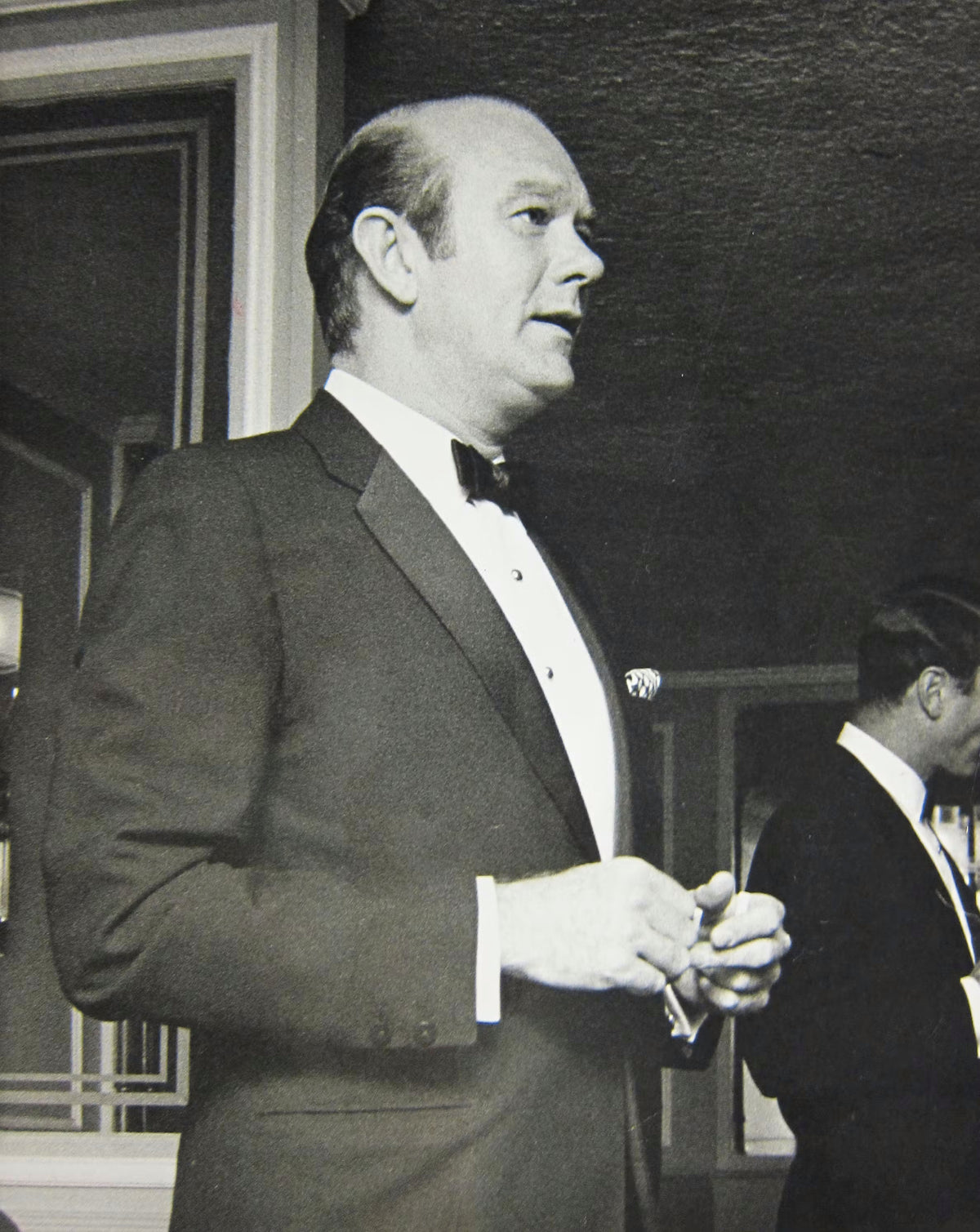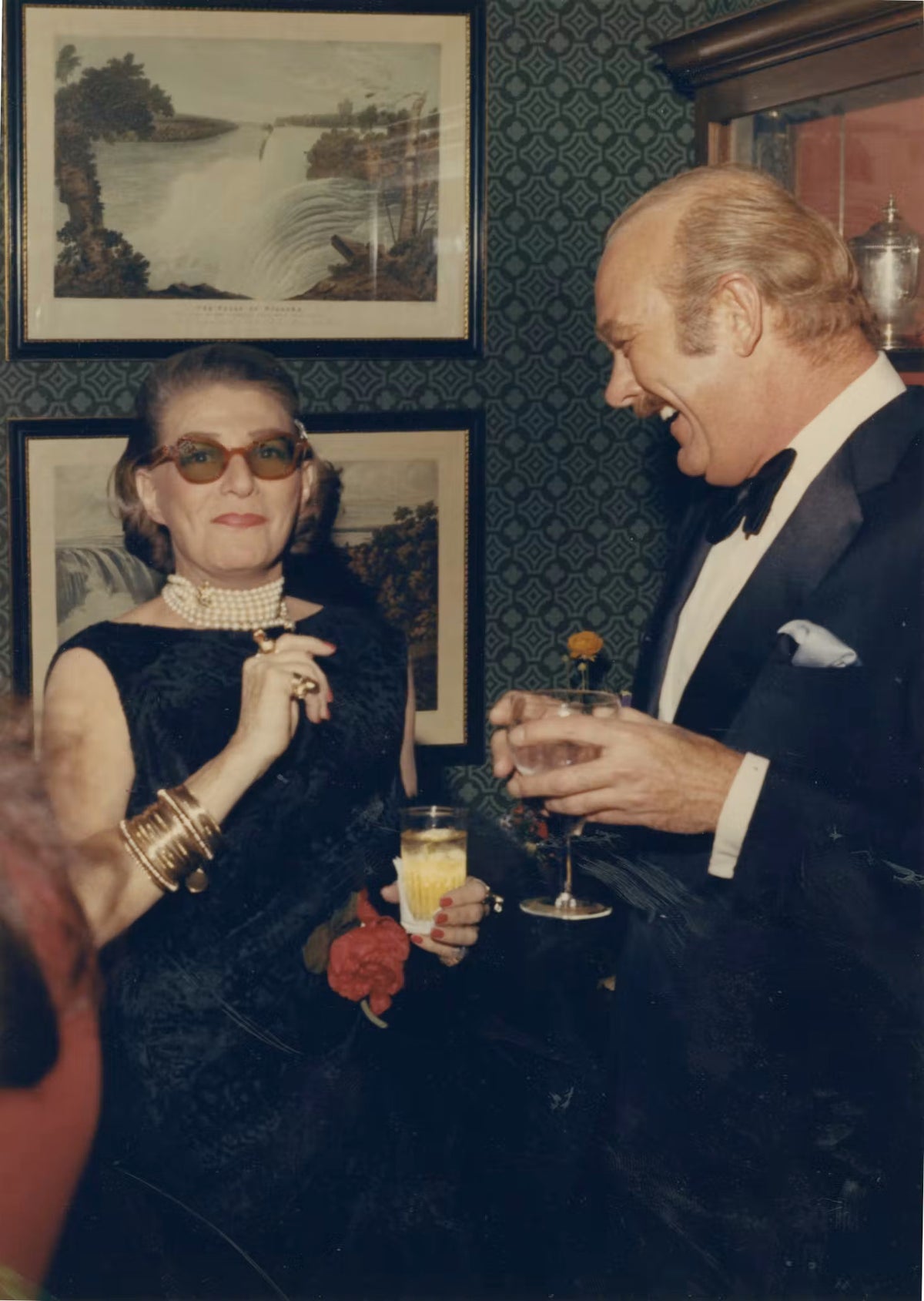
ABOUT DAVID WEBB
Since 1948, David Webb has defined American luxury jewelry with a distinctive visual identity that continues to captivate the most discerning clients and tastemakers worldwide. Our heritage combines bold design, sumptuous materials, and sophisticated craftsmanship, and a touch of cheekiness - making David Webb synonymous with the highest echelons of the bejeweled arts.Born July 2, 1925, in Asheville, North Carolina, David Webb developed his creative talents surrounded by the lush landscapes of the American South. His first foray into working with his hands was through his uncle, a fellow metalworker, who helped a young Webb craft souvenir copper ashtrays stamped with a small spider’s web - a playful nod to his surname.
After honing his skills at the Penland School of Craft in the Blue Ridge Mountains, Webb set his sights on New York City. David Webb spent the majority of the 1940s getting his feet wet on the famed jeweler’s row, 47th Street. By 1948, he had founded his eponymous firm with the financial aid of a gregarious French socialite, Antoinette Quilleret.
"I had a tremendous feeling of art in me. I wanted to be an archaeologist, a ceramicist, or a jeweler. Jewelry won out."
David Webb’s ascent was swift, and meteoric. Quilleret introduced David Webb into Manhattan elite society, where he rapidly gained recognition. The 1950s saw his jewelry featured on the cover of Vogue Magazine, with a subdued but gorgeous set of pearls on a rather demure woman in all black with a lace fascinator. Major American companies began using David Webb jewelry for their own advertising campaigns; Revlon’s Persian Melon nail polish ads in Harper’s Bazaar and Life Magazine featured Webb’s bracelets, and Ford Motor Company’s first “fashion trend” ad for their La Galaxie car featured a modern American woman wearing - of course - modern David Webb jewels.
In the late 1950s, David Webb’s friendship with Hollywood film producer Ross Hunter led to David Webb’s jewels being featured alongside luminaries like Doris Day and Rock Hudson, earning him coveted “Jewels by David Webb” title cards in films including “Pillow Talk” (1959). Other Hollywood films included Portrait in Black, If a Man Answers, Midnight Lace, Madame X, and Backstreet.

David Webb in his boutique.
"Women are tired of jewelry-looking jewelry, and they want one-of-a-kind pieces... Animals are here to stay."


"Pack of Jeweled Animals" Life Magazine, 1964.
David Webb Archives.
In 1964, David Webb won the highest of fashion accolades, the Coty Award, for his animal jewelry. The American Fashion Critics’ Award was bestowed upon him at The Metropolitan Museum of Art by Gloria Vanderbilt Cooper; the award ceremony featured a film created by famed photographer Milton Greene and fashion illustrator Joe Eula, showcasing Webb’s winning animals lurking in forest foliage.
The 1960s saw Webb establish his distinctive design language—bold forms and richly textured gold inspired by diverse sources from Etruscan art to Art Deco. His personal library and frequent visits to the Metropolitan Museum of Art informed a design aesthetic that seamlessly blended ancient motifs with modern sensibilities.


David Webb's versatility ensured there was a design for every taste: architectural pieces with graphic enamelwork; textured gold adorned with diamonds for daily wear; and fluted rock crystal for evening elegance. His appreciation for materials like carved hardstones (lapis, coral, onyx, and jade) became hallmarks of the brand, reinterpreted through the modernist lens of the 1960s and 70s.
"The thing women want most today is a smashing piece of jewelry they can wear in the daytime and on into the evening."

David Webb, right, and Rudy Reiter, left, in the workshop circa 1975. David Webb Archives.

The 1960s brought significant expansion with new stores in Palm Beach and Houston, locations which remain synonymous with the brand today. Webb cultivated relationships with First Lady Jackie Kennedy, collaborating on the creation of desk objects made from North American minerals as official Gifts of State—a tradition that would continue through multiple administrations. His client list grew to include the Duchess of Windsor, Lady Bird Johnson, and Nancy Reagan, establishing his presence at the highest levels of society; many of David Webb’s donations for a 1966 benefit for the Hospital for Special Surgery - chaired by the Duchess of Windsor and Jackie Kennedy - are featured today in the house’s permanent Museum Collection.
By the 1970s, David Webb had secured his place among the most influential jewelry designers of the century. His workshop became an incubator for future design talents, including Donald Clafflin (later of Tiffany & Co.) and Aldo Cippulo (creator of Cartier's Love Bracelet). His experiments with jade opened a new world of color and texture; Martha Graham and Diane Von Furstenberg wore his jade designs over their sequined caftans and on the cover of Town and Country, respectively. Rock crystal beckoned; interchangeable, modular geometric designs called Totems emerged, each more colorful and joyously wearable than the last.

David Webb Archives.

David Webb Archives.
Tragically, at the height of his success, David Webb passed away suddenly from pancreatic cancer on December 12, 1975, at just 50 years of age.Following Webb's passing, Nina Silberstein (then President of David Webb Inc.) and her family continued his legacy, working with the abundant designs and renderings he left behind. Throughout the 1980s, 90s, and early 2000s, the brand persisted, always keeping its doors open. The Beverly Hills branch was opened in 1992, and the New York City boutique moved among 57th Street, Park Avenue, and lower Madison Avenue.After navigating the 2008 financial downturn, the company found new life in 2010 under the ownership of Mark Emanuel and partners, establishing its current home at 942 Madison Avenue in a historic 1920s bank building.
The period 2010-2024 marked a renaissance for David Webb. In 2013, David Webb: The Quintessential American Jeweler, written by Ruth Peltason and featuring images by Ilan Rubin, celebrated the house’s 65th anniversary; Peltason and Rubin would create the house’s second book, The Art of David Webb, for the house’s 75th anniversary in 2023. The house was featured on CBS’s 60 Minutes, among a plethora of national and international news outlets, and national campaigns with legendary portrait photographers Inez and Vinoodh and Juergen Teller helped reestablish its media presence.
In 2018, David Webb’s Zebra Bracelet entered the permanent collection of the Metropolitan Museum of Art. The brand's first in-house exhibition, "A Walk in the Woods" (2022), celebrated Webb's animal designs, while its international presence expanded with participation in multiple international exhibitions and the opening of a boutique in Doha, Qatar in 2023.
In January of 2025, David Webb was acquired by investment group Middle West Partners. The investment group - drawn to the house’s unwavering commitment to exceptional craftsmanship, and extraordinary design work, all deeply rooted in the house’s American heritage - vowed to preserve the remarkable legacy of this iconic house. Under their stewardship, the house will continue the brilliant legacy of a visionary whose creative spirit endures in every piece that bears his name.


David Webb Archives.
